This is part of a series about my experiences in publishing a book. The series starts here.
In yesterday’s post, I took apart a copy of Staccato, and learned that the reason the pages weren’t laying flat was that the part of the mull in the spine area was too stiff to allow it to do so. I don’t relish cutting up books, but I thought that maybe I’d learned enough from yesterday’s dissection that I’d be able to learn how other binderies handle this issue with less invasive techniques.
I started with a book I had ordered a while back, but never opened.
This book has many pages per signature, which should in theory keep it from lying flat:
But when you open up the book, even with no break-in, the spine bows nicely, and the pages lie pretty flat:
Next up, the 1987 edition of Frank’s masterwork:
Note that the spine is bowed the wrong way, which would actually help if it were flexible enough, but it isn’t:
A bit of force makes no difference; it’s as if the spine were glued down.
Next, the 2000 edition of the same book:
The spine on this one bows just fine:
Now, a Eugene Richards book:
This one has images that span the gutter:
And the spine bows quite nicely:
How about an older book:
This one has had a lot of use. At first glance, it looks like the mull works differently, since the headband is straight and the spine itself is bowed:
If we flip the book over and look at the other end of the spine, we can see that the headband is missing. Now it looks like the one on the other end just came loose:
The glue in this older, well used, book can no longer hold the quires to the mull. However, the stitching is still holding, and the book is in no danger of falling apart.
I did find several books that curved the mull in the other direction when the book is closed:
This should reduce tension of the mull when the book is open:
All in all, it appears that no exotic techniques are necessary to get the spine to bow properly. It’s just that the part of the mull in the spine region is too stiff in my book. To be sure, this is a acceptable, if not perfect, situation. The pages do indeed lie fairly flat after the book in broken in. But it’s not perfect, and it looks like it didn’t have to be that way.
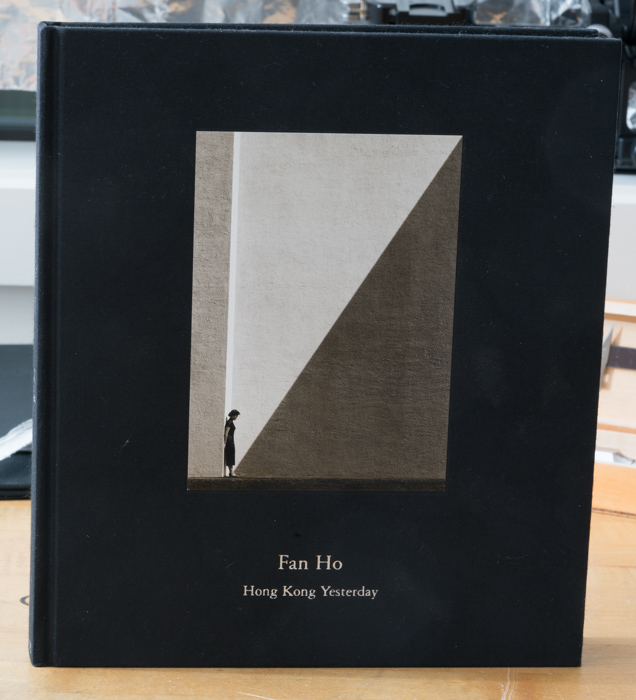
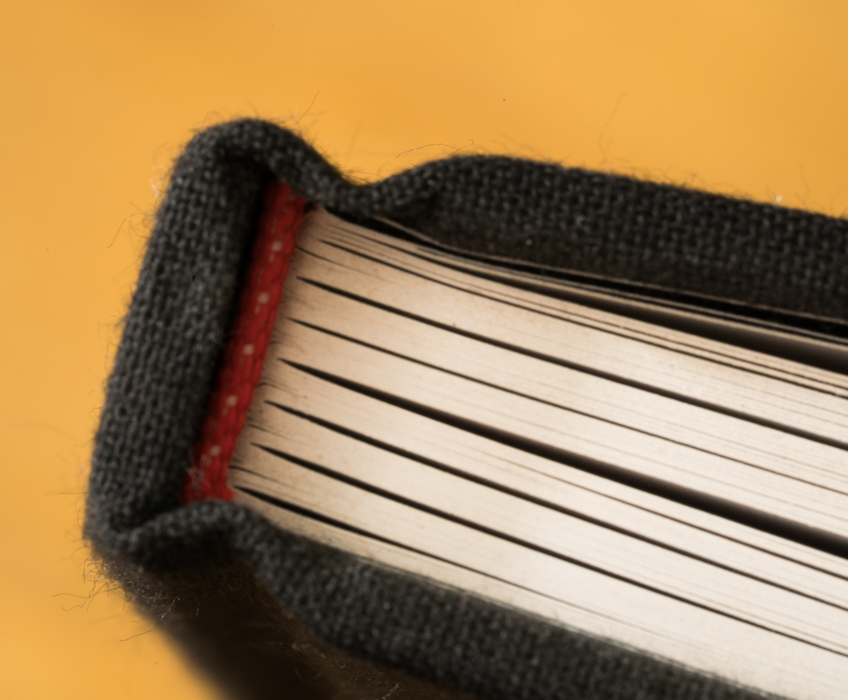
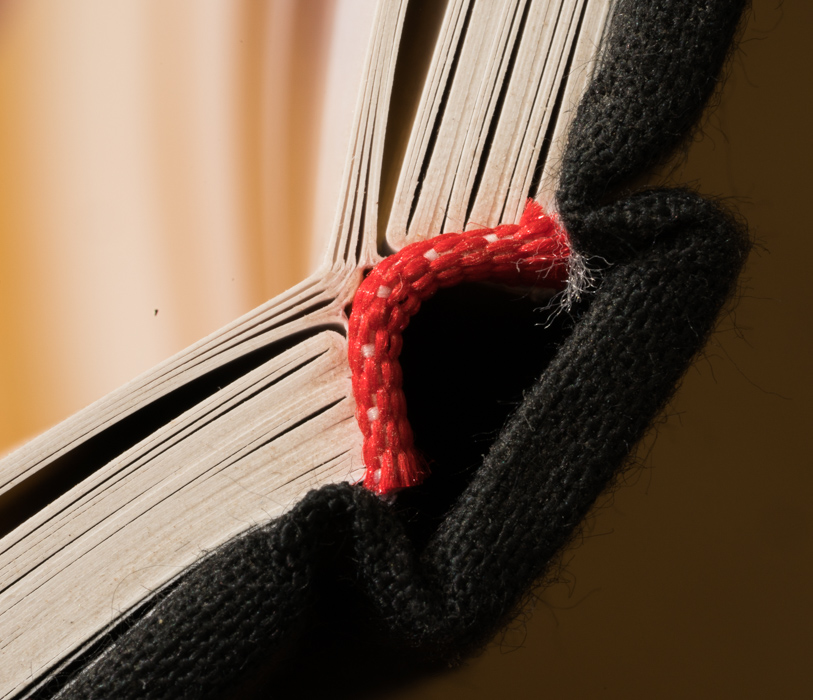
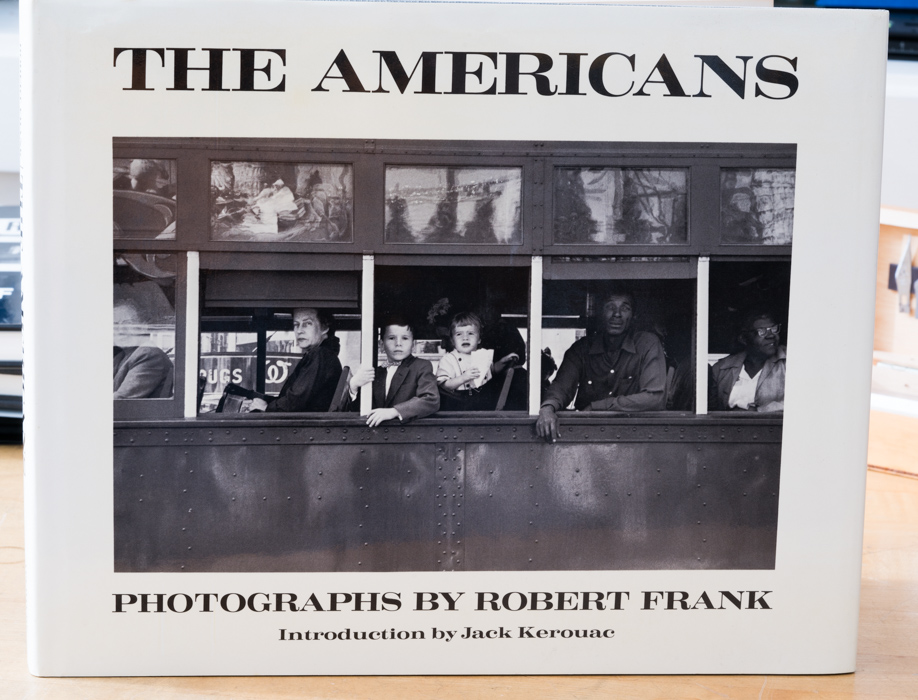
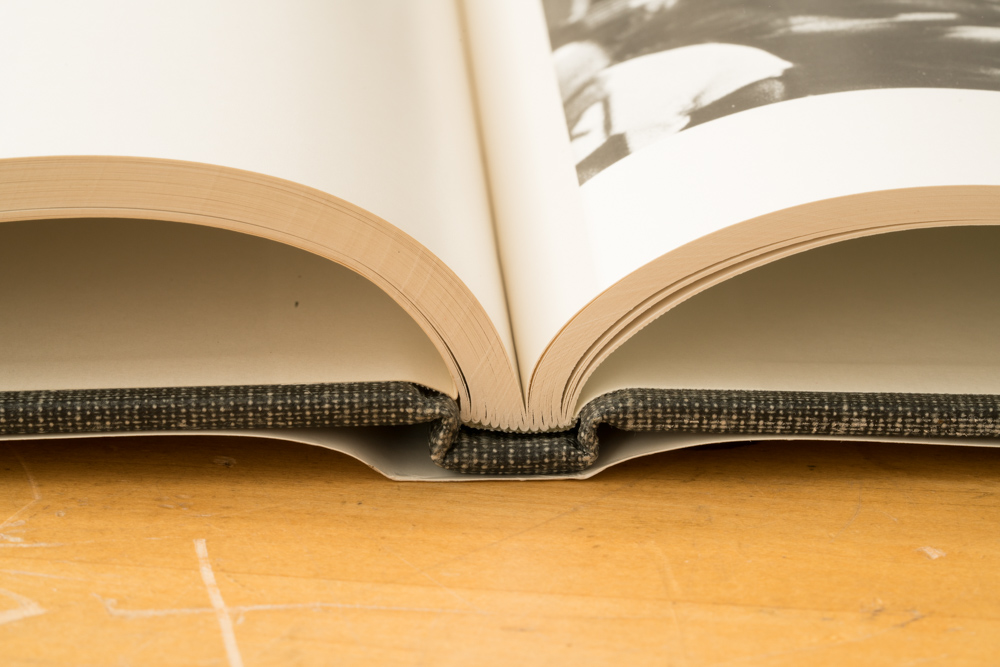
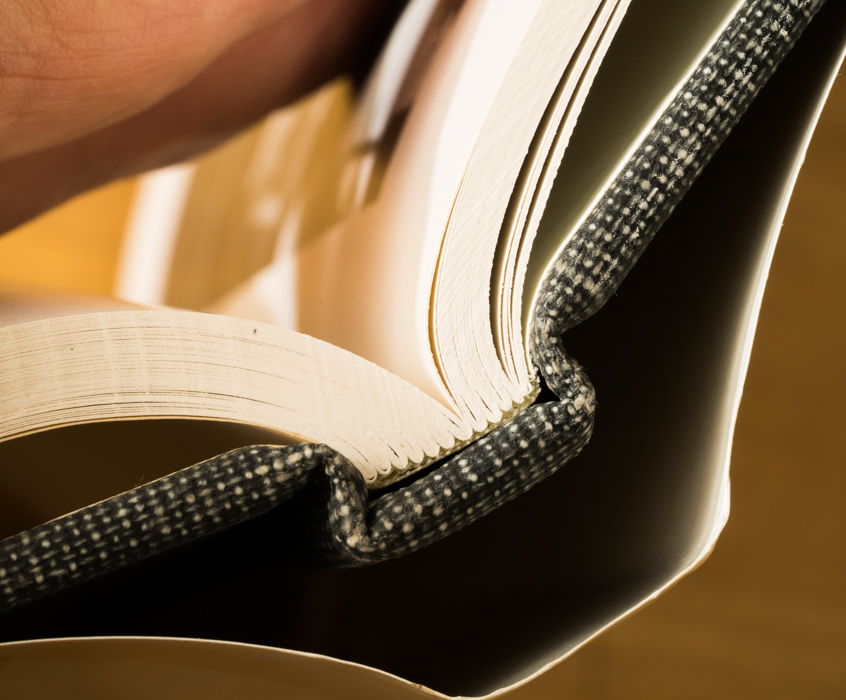
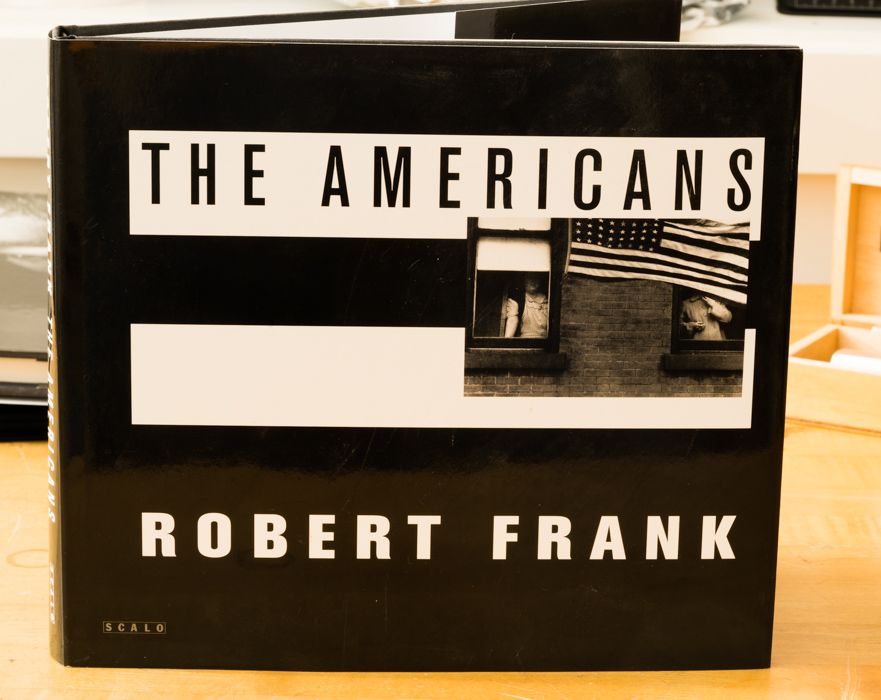
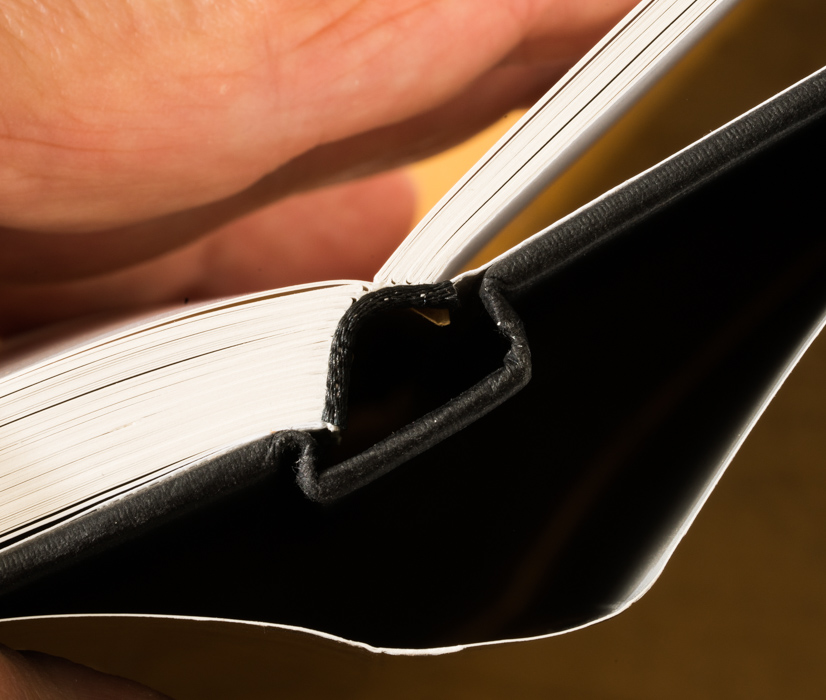
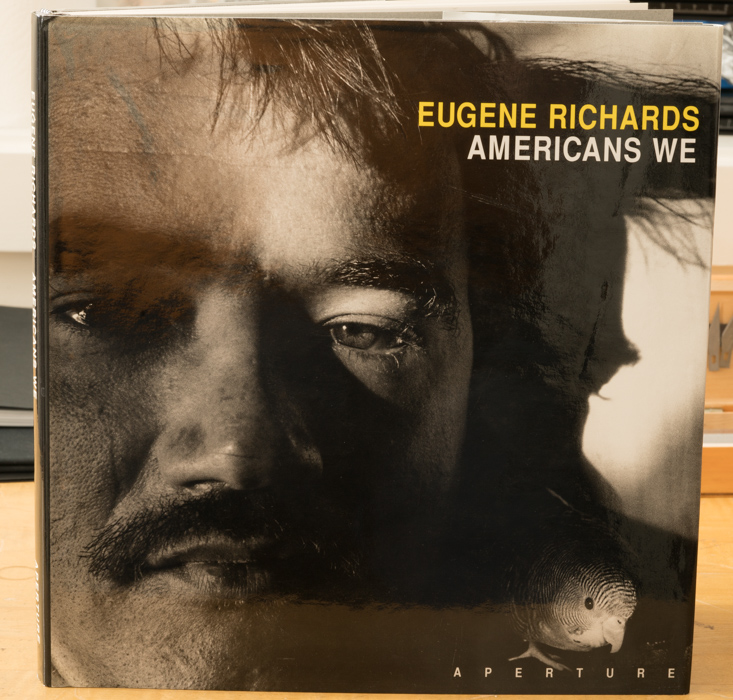
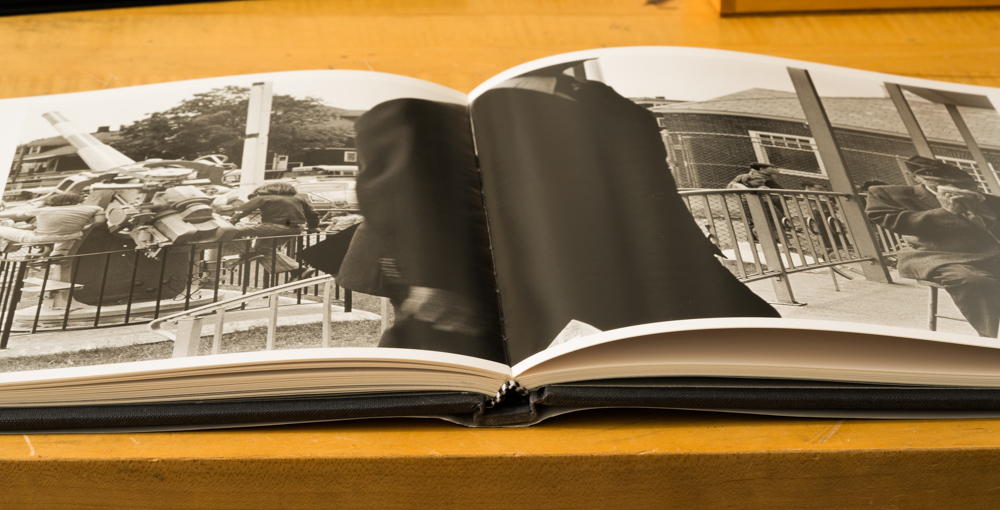
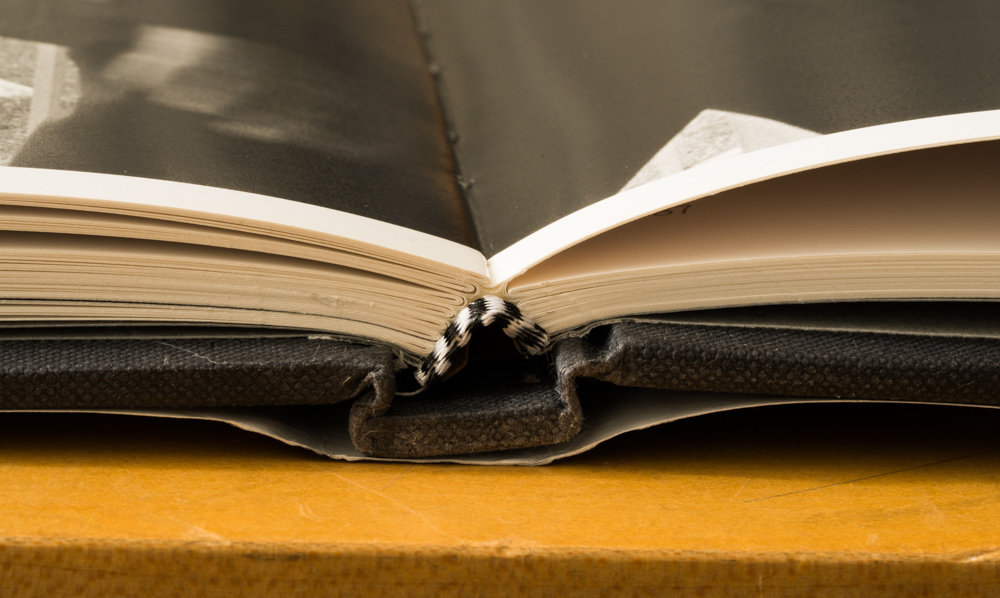
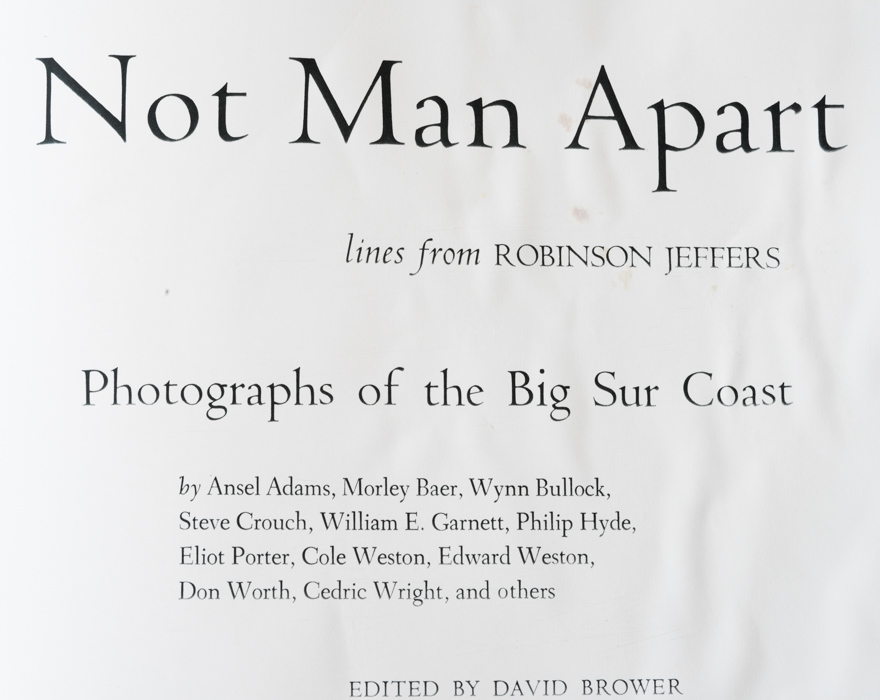
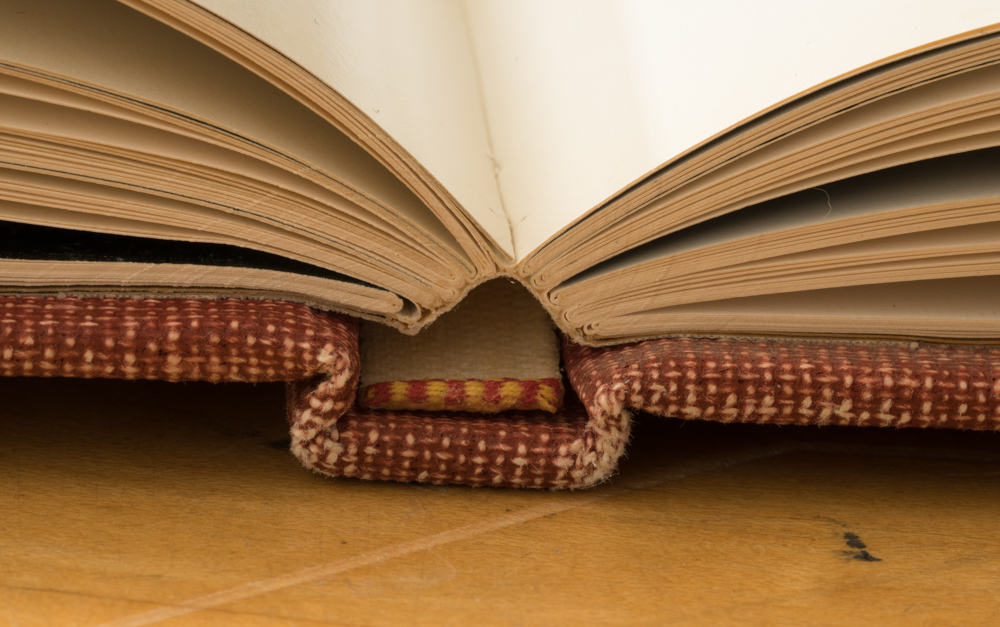
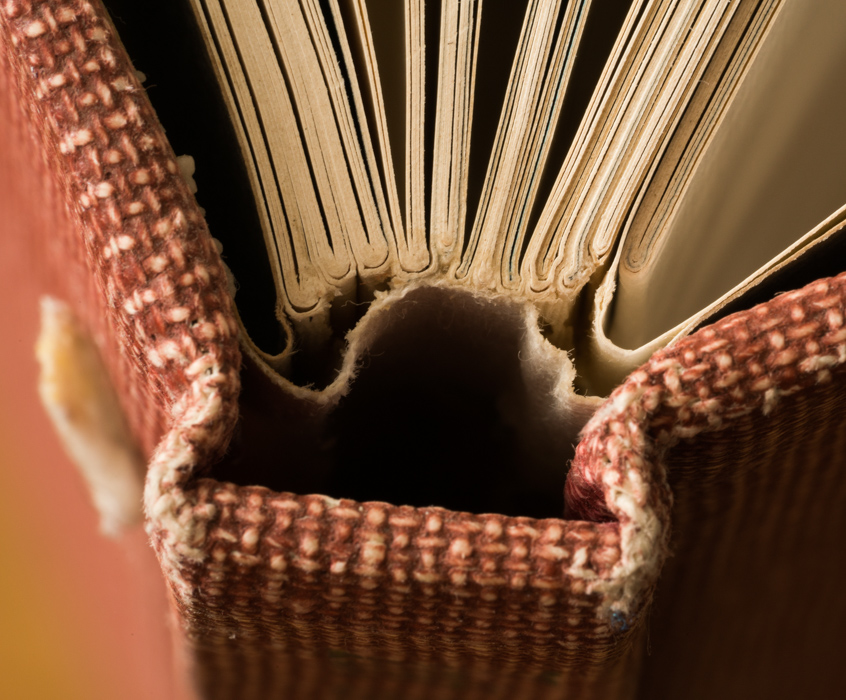
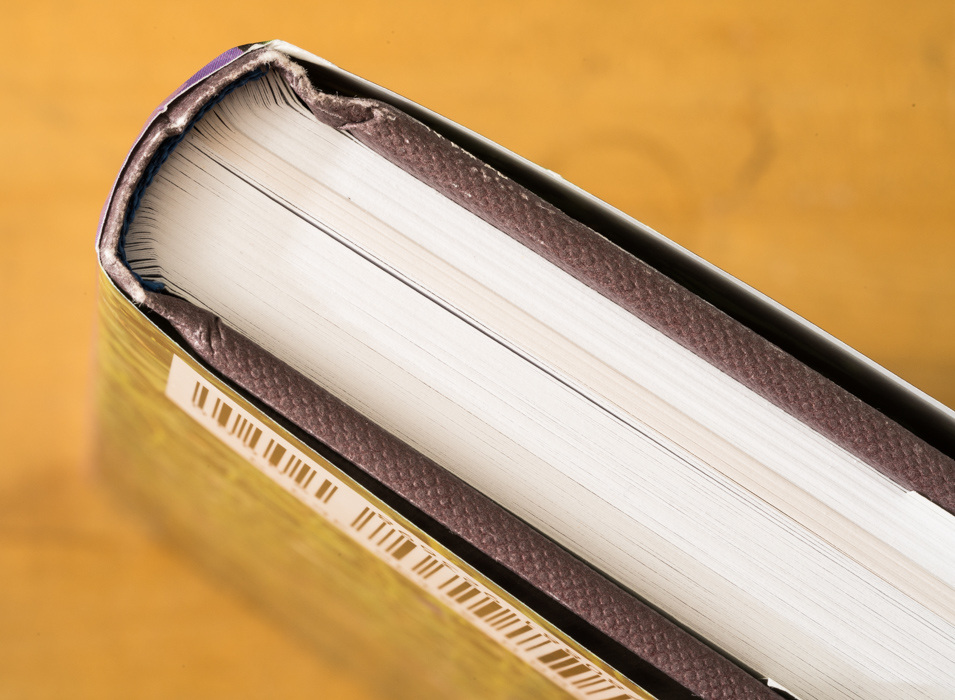
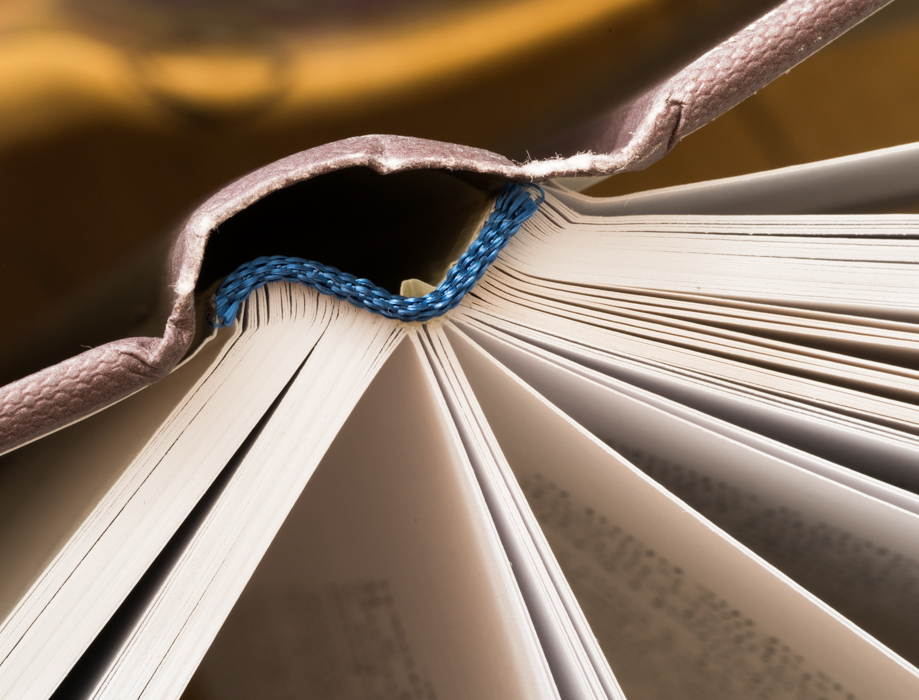
Leave a Reply